This presidential election, citizens will confront an array of voting challenges that harken back to the debacles of 2000 in Florida and 2004 in Ohio. Instead of increasing access to voting and providing safeguards to ensure every person has their vote counted, we are well on the way to repeating history.
The rule of law and our democracy are at stake with voting laws literally changing every day and new challenges in key battleground states mounting. Recent concerns with voter identification and suppression in Florida, Ohio, Pennsylvania and other states suggest a potential replay of the previous presidential voting irregularities that once again could alter the course of our nation.
Voter identification laws have been passed in 33 states, almost exclusively by Republican-led state legislatures. The application of these laws will vary widely as the 13,000 voting districts in the nation are overseen by state secretaries of state and county election supervisors of varying political affiliation.
In Florida, voter registration has declined significantly in the past year as a result of a state law imposing fines of up to $1,000 for failing to report the names of newly registered voters within 48 hours of collection, even on a holiday weekend when local election boards are closed. A federal judge has recently said he plans to block the harsh penalties from taking effect. In addition, in a flashback to 2000 when more than a thousand eligible voters in Florida were wrongly purged from the voter rolls before the election, this year's purge lists were so inaccurate that some local election officials simply refused to enforce them. As former Senator Bob Graham (D-FL) recently wrote, the haunting specter of that election is still with us.
In response to the new requirement that voters have government-issued identification, the Pennsylvania Department of State announced that 758,000 residents may be at risk of not having the required identification. In fact, the Pennsylvania Majority Leader announced his motives for Voter ID: to deliver Pennsylvania for Governor Romney. The new law was passed despite the state's acknowledgement that it knows of no instances of in-person voter fraud in Pennsylvania. For that matter, there is scant evidence of such voting fraud across the nation. The Pennsylvania law has been upheld by the courts, though its impact on the election in that state is unpredictable. The Brennan Center for Justice offers some solutions to these voting barriers.
In Ohio, the early voting period was decreased from two weeks to eight days, though a federal judge has ruled that voting must be allowed statewide during the last three days before Election Day. Working in Cincinnati in 2004, I witnessed that presidential campaign become a déjà vu of the 2000 campaign -- with defeat literally snatched from the jaws of victory for the Democratic presidential candidate. Senator Kerry was leading by five percent in Ohio, according to Election Day exit polls, and then lost by two percent. Many explanations for this statistically improbable turnaround have been offered, including manipulation of newly installed technologies required by the 2002 Help America Vote Act (HAVA).
Many state secretaries of state throughout the nation continue to play a political role in presidential campaigns. This role, combined with their vital official function as chief elections officer, often represents a conflict of interest in the impartial distribution of voting machines to election districts. Members of county boards of election, often politically affiliated, work closely with them in determining allocations. For example, the number of voting machines in Democratic-leaning districts was reduced in key Ohio counties from 2000 to 2004, despite a sharp rise in registered voters. In Franklin County, for example, which includes Columbus, 65 of its 146 Democratic-leaning wards had fewer voting machines than in 2000, while 45 of the Republican-leaning wards had more. This decrease in machines within the county's Democratic wards occurred despite a 25 percent increase in registered voters there. One result was the appearance of voting lines lasting up to nine hours in these wards, leading voters to abandon the polls on a cold, rainy Election Day.
Following the 2004 election in Ohio, two former election workers in Cleveland pleaded no contest to rigging a recount of the election and Congressman John Conyers (D-MI) held investigative forums that resulted in the report, "What Went Wrong in Ohio," which chronicled voluminous instances of voter suppression and voting machine irregularities.
The vulnerability of the voting machines themselves continues to threaten the integrity of the 2012 presidential vote. According to the producers of the documentary, Electoral Dysfunction 11 states still do not require a paper trail for their voting machines, leading to a significant risk of vote manipulation.
At least 14 legal cases challenging voter-list purges, provisional-ballot rules, early voting curbs or photo identification mandates are pending in Wisconsin, Pennsylvania, Colorado, Iowa, Florida and Ohio. How they are resolved may determine the next president. For the moment, it appears that in this presidential election, as in 2000 and 2004, many state legislatures are focused on discouraging Obama supporters from voting. This chilling reprise is supported by a credible narrative in Turning Point, a newly published political novel that provides a reminder of voting controversies in recent elections and a warning for what could happen again in 2012. From the critical role of swing-vote Supreme Court justices to voter suppression in key battleground states, the book provides a compelling vision of America today had the Supreme Court decided in 2000 to recount all the rejected ballots in Florida and a progressive Democrat had been elected president.
This year, Democrats and Republicans alike need to ensure that everyone plays by the same rules and that the candidate who wins is the candidate elected, without votes suppressed or left uncounted. Our democracy can't afford to repeat the same mistakes.
Author and campaign veteran Charles Santangelo, a former assistant professor of information technology policy, served as a White House aide and in press and constituency-building roles during six presidential campaigns. He is the author of Turning Point. www.turningpointnovel.com